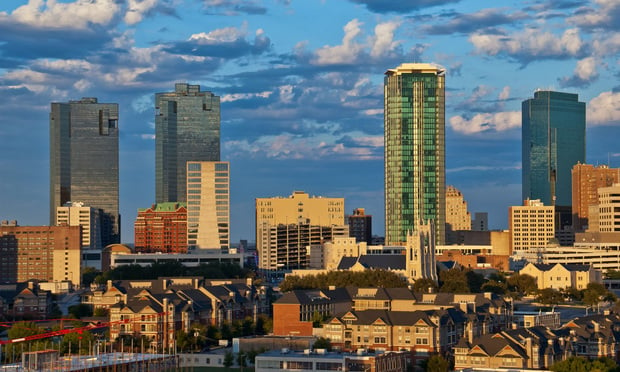SAN DIEGO—The next big focus in residential water-use reduction will be on finding ways to make ornamental landscaping more water friendly, the California Building Industry Association's CEO Dave Cogdill tells GlobeSt.com. CBIA is hosting the California Water Forum at PCBC from 1:30 to 4:00 p.m. here today, and Cogdill is both presenting the welcome address and moderating the final panel at 3:30. We spoke exclusively with him about what the Water Forum will tackle, how homebuilders can reduce water usage in their properties and steps to take in a drought situation.
GlobeSt.com: What will be the main points covered during the Water Forum at PCBC?
Cogdill: The Water Forum is a response to Governor Brown's executive order related to mandatory water conservation efforts in the state of California, which is a historic event. CBIA members are on the front lines with this as it relates to construction since we're building 100,000 units a year—and it could be closer to 200,000 units this year because of organic demands for growth from the state. This is obviously causing affordability problems. New-home construction is a small piece of the need for water. The majority of folks buying our new product are moving out of less-efficient housing in California, and the product we produce today is 50% more efficient than homes built in the 1980s, which is a large percentage of our housing stock. Our projects are part of the solution, not part of the problem.
We've gotten our water usage down to about as efficient as we can, and the only thing that remains is reducing water in landscaping. We're working with the state on development of a new model for ornamental landscaping to reduce water usage there. We're trying to get to net-zero energy and hot-water usage in homes.
The Water Forum will consist of three panels, each covering a differing drought-related topic: the mandatory requirements and the challenges of implementation; delivering solutions in real time, innovations in water-efficient landscaping and water use; and planning longer term to accommodate California's future water needs. Hopefully, it will be informative for folks looking for a solution to the drought situation.
GlobeSt.com: What are the most important steps homebuilders can and should take to reduce water usage in their properties?
Cogdill: As it relates to the product we provide now and uses within the home—appliances, faucets and fixtures—we've gotten down to the point of being about as efficient as you can make them and still provide a good service. Reduced water usage in the home can be tackled on a fixture-by-fixture and appliance-by-appliance basis—the only improvement can be reducing flow in bathroom faucets by a relatively small amount.
We're really focusing now on ornamental landscaping and how we can promote more-efficient water use in that area. We're looking at a model landscape ordinance that would require water budgets to be produced to determine what you can do on the outside. We're determining how we can deal with that, how it will apply to watering grass—trying to find that balance of enough moisture to keep turf alive while still being water efficient. There may be challenges and restrictions on how large a lawn area you can have, calls for increased rockscapes or drip systems for plants that cut the evaporation rate. We're looking at trying to achieve a 25% to 30% reduction over what might be the standard. We believe there are ways to do that responsibly and continue to provide product to our buyers that's acceptable.
GlobeSt.com: What steps should homebuilders take in a drought situation vs. a non-emergency situation?
Cogdill: A lot of what's happening now is going to involve long-term ongoing policies as we move into the future. Through different efforts that have taken place over the last decade, we've become more efficient with our use of water. We are an arid state, and although we do receive in certain years a lot of precipitation, we don't have the infrastructure to store that water during wet years. A water bond directed toward that goal of improving infrastructure for we-year management is being discussed. Also, most of our precipitation falls in the northern part of the state, and a lot of that runs out through the Golden Gate rather than being captured for use during drought years. If we create a twin-tunnel system in the delta to allow us to store rainfall in underground aquifers, it will be a very expensive process, but rate-payers may be willing to pay it to secure a better water supply in the future. We need to find ways to conserve water to the greatest extent possible so we can get through a three-to-four-year drought without emergency cutbacks resulting.
GlobeSt.com: On Monday, to kick off PCBC, you had a walk-through of KB Home's Sea Cliff development in San Diego, the first new home community in the nation where all of the homes are built with advanced on-site water-recycling capabilities. What was stressed during this walk-through, and what did attendees learn?
Cogdill: There was lots of discussion of the most recent technology regarding water re-use and the systems employed there. The governor's regulation deals with potable water, so finding ways to use non-potable or gray water for landscaping will be key. We also highlighted the systems available for employing technologies that allow for more efficient use of water.
© Touchpoint Markets, All Rights Reserved. Request academic re-use from www.copyright.com. All other uses, submit a request to [email protected]. For more inforrmation visit Asset & Logo Licensing.






